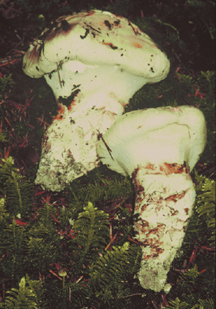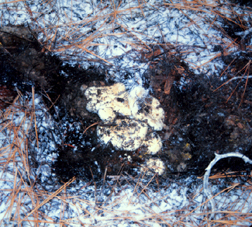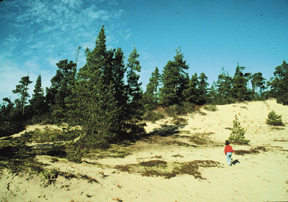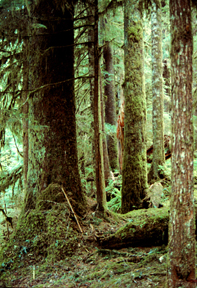

SilviShrooms
Predicting edible mushroom productivity using forest carbon allocation modeling and immunoassays of ectomycorrhizae




A variety of factors are known to influence the allocation
of carbon below ground. For instance, trees are known to allocate
a larger proportion of their NPP below ground on infertile sites
than on fertile sites. Much of this allocation goes to mycorrhizal
fungi to enhance their ability to obtain nutrients. The same is
true of old forests, and of boreal or high elevation forests growing
on cold soils, where nutrients are often tightly bound in accumulated
organic matter. Drought-related stress can also influence below-ground
carbon allocation when trees provide more carbohydrates to roots
and mycorrhizae to obtain scarce water. In some cases drought
related stress can be influenced by tree size because tall trees
experience greater hydraulic resistance moving water to a more
distant canopy, while small trees might not fully exploit available
soil water.
Most factors that limit tree growth also increase the proportion
of NPP allocated below ground. It is possible that mushroom productivity
will be significantly correlated with a simple integrative measure
of growth constraints such as site index (the ratio of tree height
to age), and we will test this possibility. Our hypothesis states,
however, that mushroom productivity is correlated with the amount
(kg/ha/yr) of NPP allocated below ground, not the proportion.
Because NPP is a relatively constant fraction of GPP (see definitions)
the quantity of NPP allocated belowground is a function of gross
primary productivity as well as proportional allocation of NPP.
In other words, although growth constraints cause trees to allocate
a greater proportion of their food resources belowground, they
have less available food to begin with because they are growing
more slowly.
|
|
|
|
 |
 |
 |
|
|
|
|